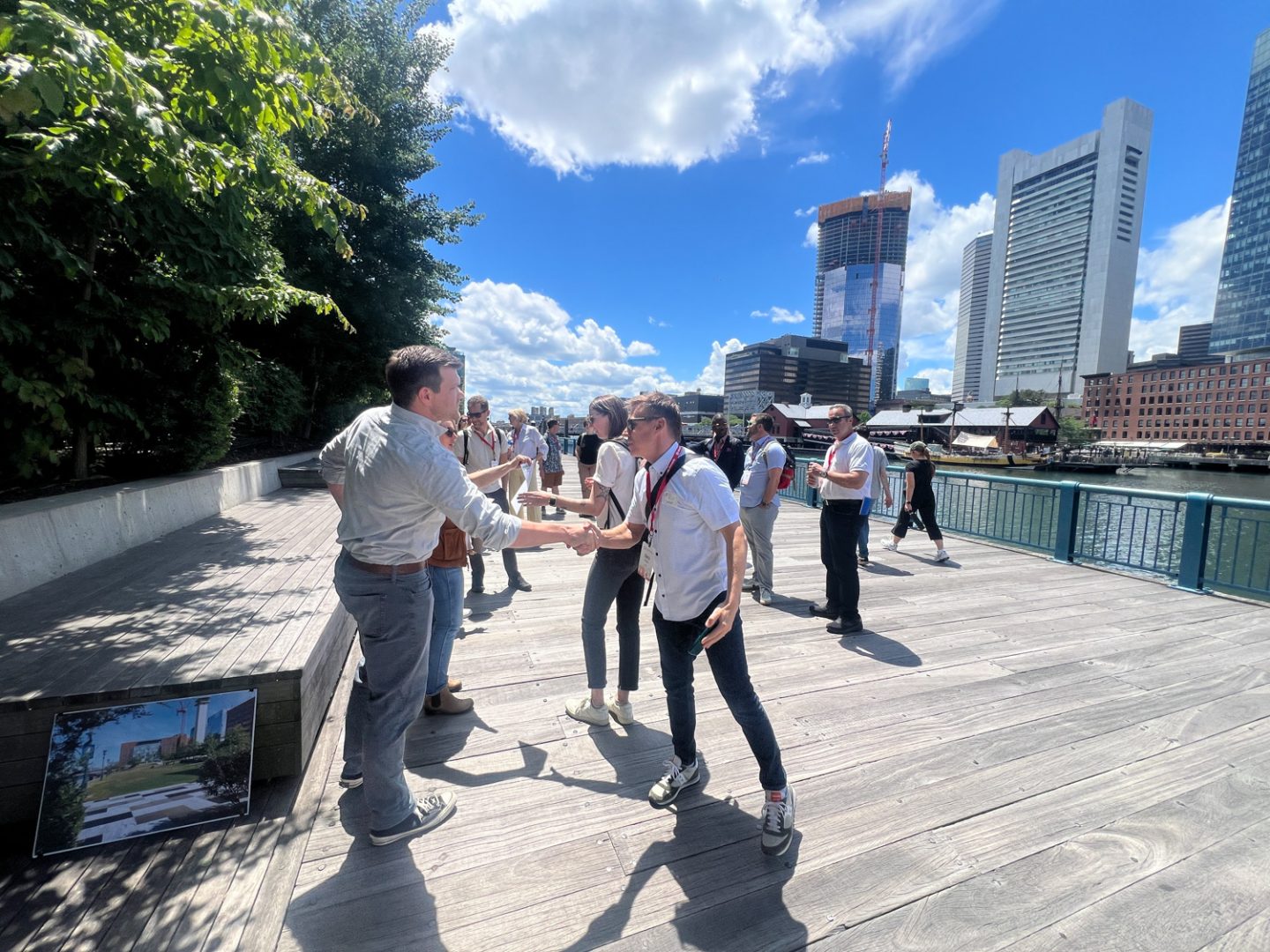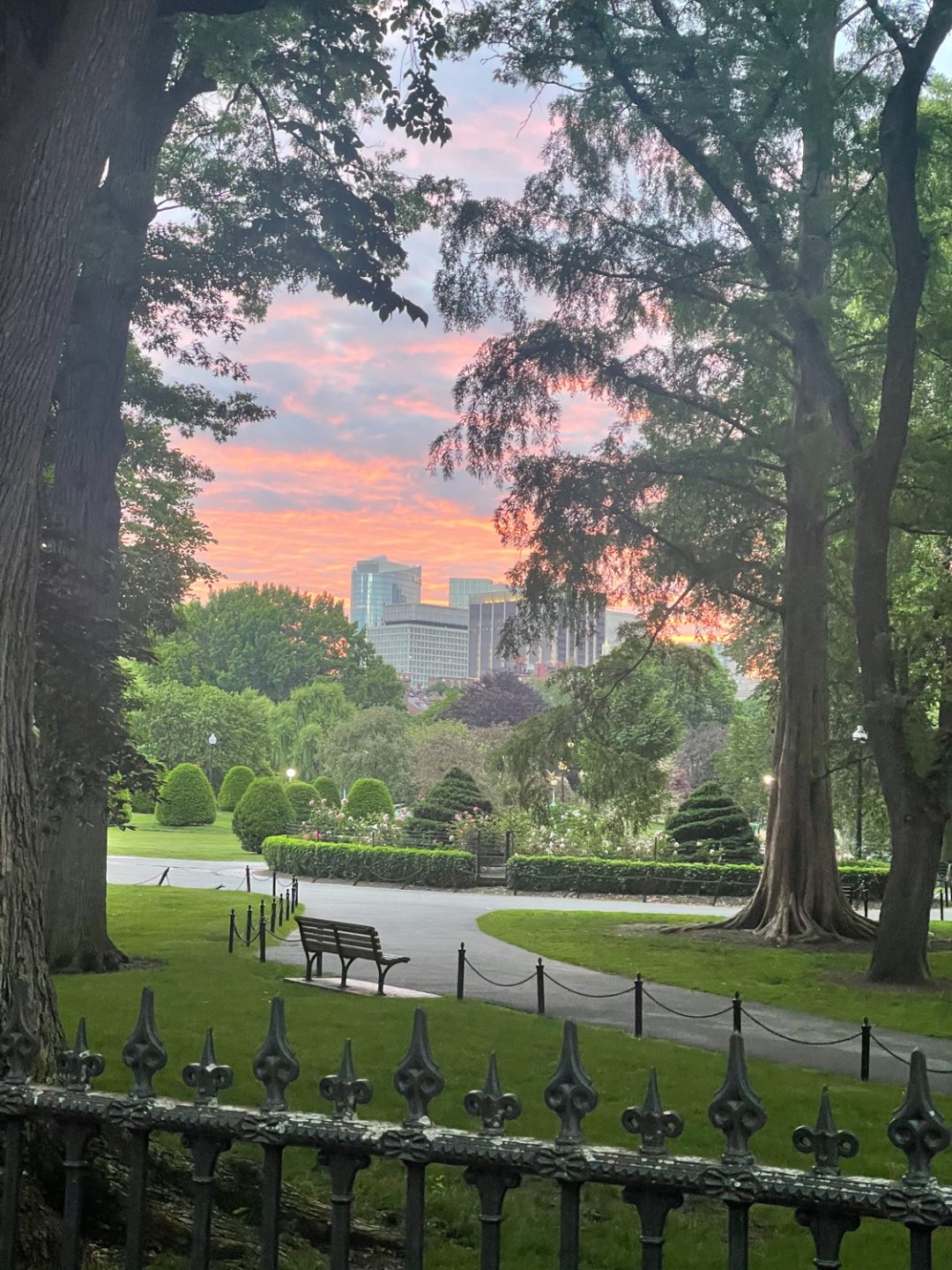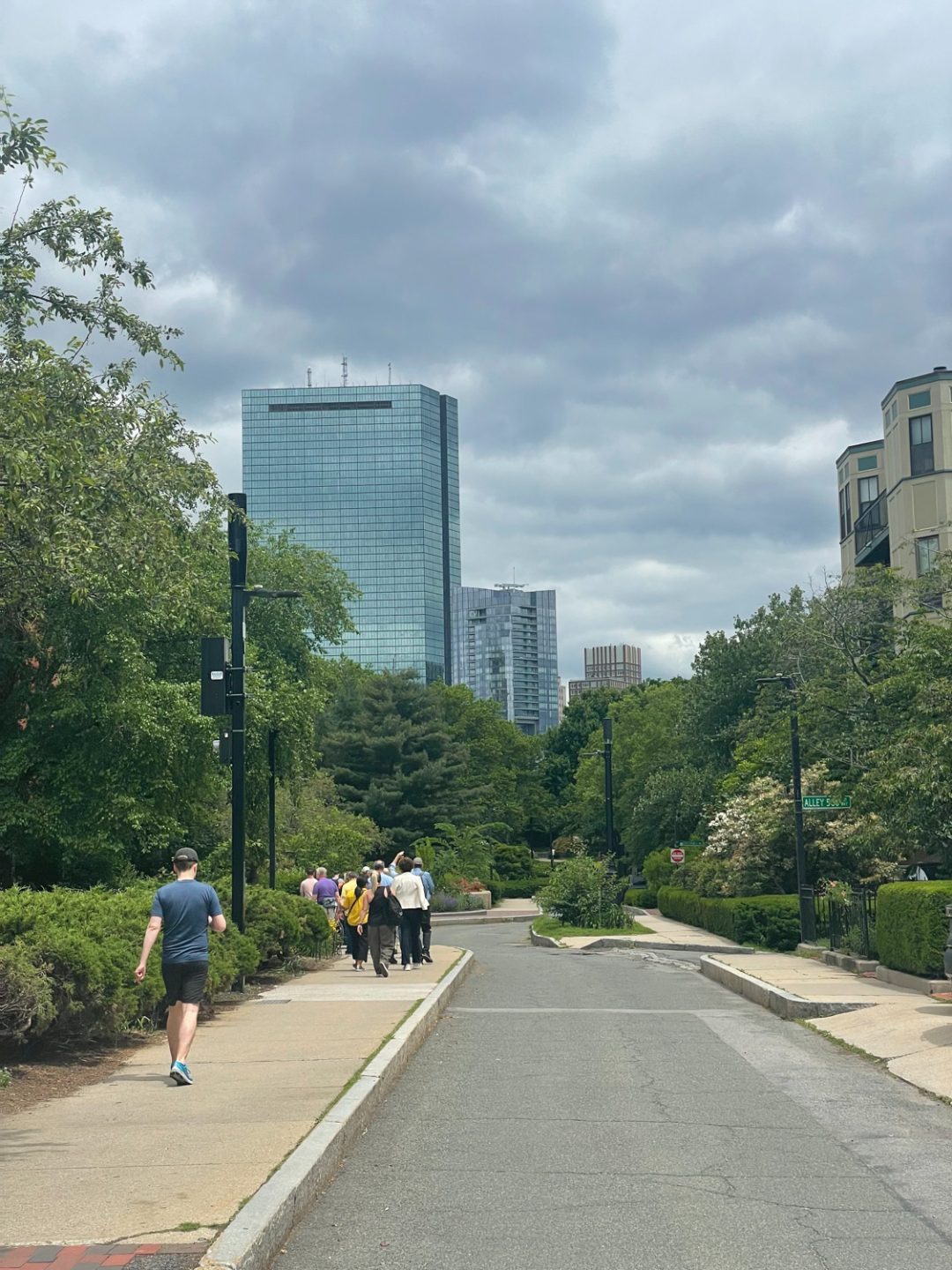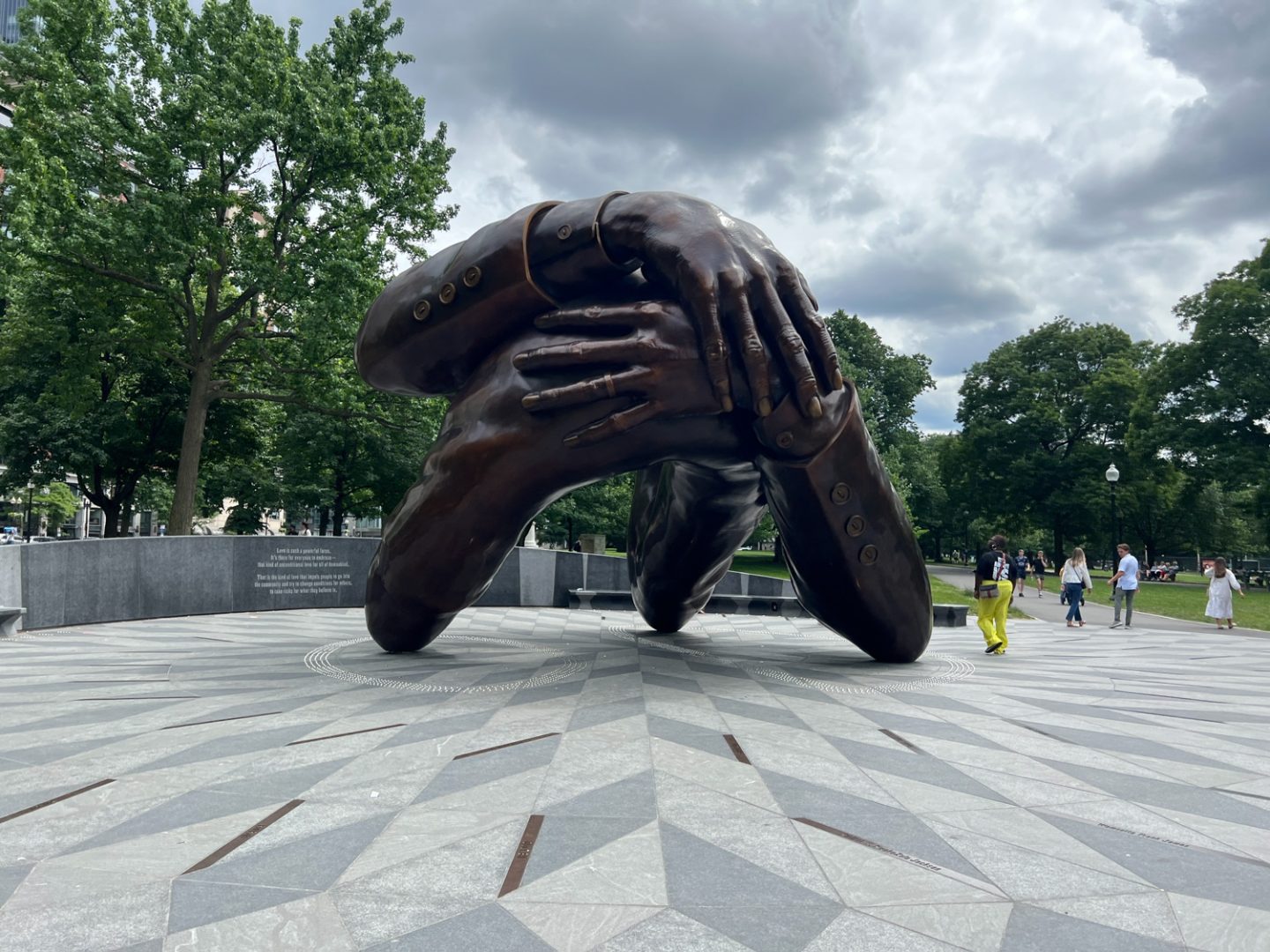What Can Denver Learn from Boston?
A Recap of the 2024 Urban Exploration Program hosted by the Downtown Denver Partnership
Technological advancements. Rapid growth. Rising costs and affordability issues. Rich history and progressive ideals. These are some of the common challenges and opportunities amongst today’s most popular U.S. cities. One place that’s addressing them head on? Boston, Massachusetts.
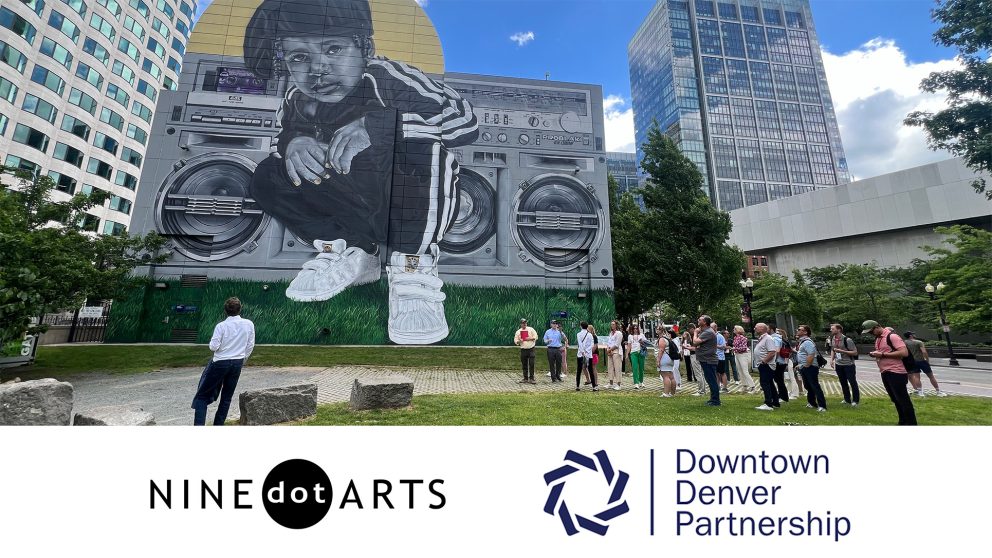
Urban Exploration participants in front of Rob “ProBlak” Gibbs’ mural, Breathe Life Together, at the Rose Kennedy Greenway
As one of the country’s oldest and most admired cities facing changes similar to Denver, it’s no wonder Boston was chosen by the Downtown Denver Partnership as the 2024 Urban Exploration Program destination. Our NINE dot ARTS team joined 150 civic and business leaders to learn about the policies and partnerships informing Boston’s growth, “from mobility and sustainability investments to youth-oriented urban design and programming, all the while respecting the ever-present challenge of adding contemporary infrastructure to a dynamic palette of historic identity and culture“ (www.denverurbanexporation.com).
In the interview below, NINE dot ARTS leaders Martha McGee (Co-Chair of the Urban Exploration Program) and Andrea Barry describe key takeaways from the trip that they’re eager to apply to our collaborations with public and private leaders throughout the U.S.
Q: What did you admire about Boston?
Martha McGee: I was really amazed at how well Boston takes care of their public realm. There was such a high level of cleanliness, thoughtful lighting and design, beautiful integration of public art, and very little poverty or homelessness. Our large groups walked all over the city – up to 30 minutes in various directions – and the entire journey was enjoyable. That’s hard to achieve in a city with such rapid growth.
Andrea Barry: Agreed. And Boston’s commitment to the public realm was especially evident in the public plazas and retail centers we experienced, like City Hall Plaza, Post Office Square, and Newberry Street. From urban tree canopies providing much needed shade to smaller streets and thoughtful landscaping helping slow down traffic and promote walkability, these spaces felt so well cared for and thus more welcoming and engaging.
Martha McGee: Yes, and because they were well-kept, they were also incredibly family friendly. I loved the diversity of people and families we saw out and about enjoying the public realm – downtown in particular. Despite Denver’s larger population, there were many more people – and families – out enjoying Boston’s urban core than I typically see in Denver.
Q: How has what you learned in Boston influenced your vision for what’s possible in Denver?
Andrea Barry: As Denver continues its major redevelopment of the 16th Street Mall, there’s a lot we can learn from Boston’s Newberry Street and Washington Street. From temporary, open street activations to decades long investments in public realm infrastructure, it’s clear that the best retail experiences result from a clear, shared vision and intimate collaboration across a range of community, business, and city leaders.
Martha McGee: And that shared vision and collaboration has to be sustained over decades. Boston was a great example of what it means to make big, bold moves for the future, yet keep a sustained commitment to those moves over many years.
Additionally, part of the family-friendly nature of Boston’s public realm is thanks to its strategic placement of various amenities that incentivize and support families living downtown. From a park placed intentionally across from the busy Boston Public Market, to the city’s two dozen child care centers throughout the urban core, Denver can look to Boston for examples of how to attract and retain families. Further, city leaders shared about the kinds of tax abatements, expedited approvals, and consensus building practices that have helped them produce more affordable housing – a necessity for families in a growing city. With a focus on housing, partnership, and prevention, Boston has decreased homelessness and increased affordability – another example for cities working to support their most vulnerable populations.
Q: What experiences in Boston are you eager to apply to your work at NINE dot ARTS?
Andrea Barry: We’re definitely seeing a rise in mixed-use development that emphasizes creativity and connectivity. People want to feel a sense of vibrancy while having easy access to nearby shopping, entertainment, food and beverage options, and open public space. And art is absolutely part of this. Installations throughout Boston reaffirmed how artwork can be used to support wayfinding, create synergies, and add an enticing energy to mixed-use spaces. I’m excited about how we can apply this to downtown Denver, leveraging public art to create shared spaces and memorable experiences in between our buildings to further enhance our public realm.
Martha McGee: And beyond adding to the vibrancy of the city, these installations help define distinct districts and shape neighborhood identity. From notable projects like the Bob Gasoi Memorial Art Alley in Provincetown – to Boston Common’s giant brass arms sculpture paying tribute to Martin Luther King Jr. and Coretta Scott King – to smaller installations like a line of ducklings that’s been a landmark in the Boston Public Gardens since the 80s – these artworks are absolutely central to these neighborhoods. For me, this reinforced what an important storytelling tool art is, and why we must prioritize it with the same intentionality as we do our major architecture and design decisions.
The Embrace by Hank Willis and Mass Design Group, Make Way for Ducklings by Nancy Schön, Bob Gasoi Memorial Art Alley
Q: What were some of your favorite activities during the trip and why?
Andrea Barry: It was hard to beat our group dinner at Fenway Park! I also enjoyed seeing the Model Room inside the Boston City Hall, which features a 1:40 inch scale, physical model of the city’s downtown and other surrounding neighborhoods. This honestly helped frame many of our visits around the city, allowing us to better understand Boston’s impressive investment in its public infrastructure.
Martha McGee: I really appreciated how hands-on and interactive the Boston City staff were during the trip. Mayor Michelle Wu shared insightful stories with us and maintained steady dialogue with our own Mayor Mike Johnston, truly embodying the type of learning and idea exchange that the Urban Exploration Program is all about.
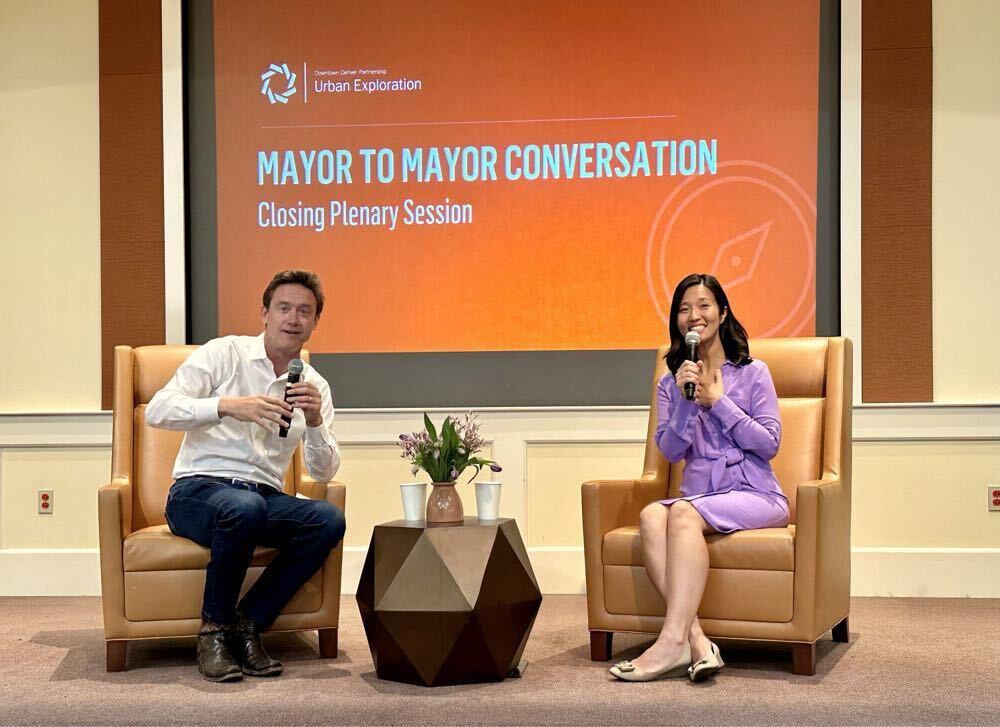
I also loved visiting all the parks and green spaces, which felt alive with possibility – from Boston Commons and the Rose Kennedy Greenway to Southern Corridor Park and Martins Park at CPort. The latter is a commemorative project for Martin Richard, an 8-year-old who died in the 2013 Boston Marathon bombing. Despite this tragedy, the park is unlike many solemn memorial sites and is instead filled with playfulness and adventure, featuring artistic jungle gyms, a boat installation on the playground, and easy access to the neighboring Boston Children’s Museum.
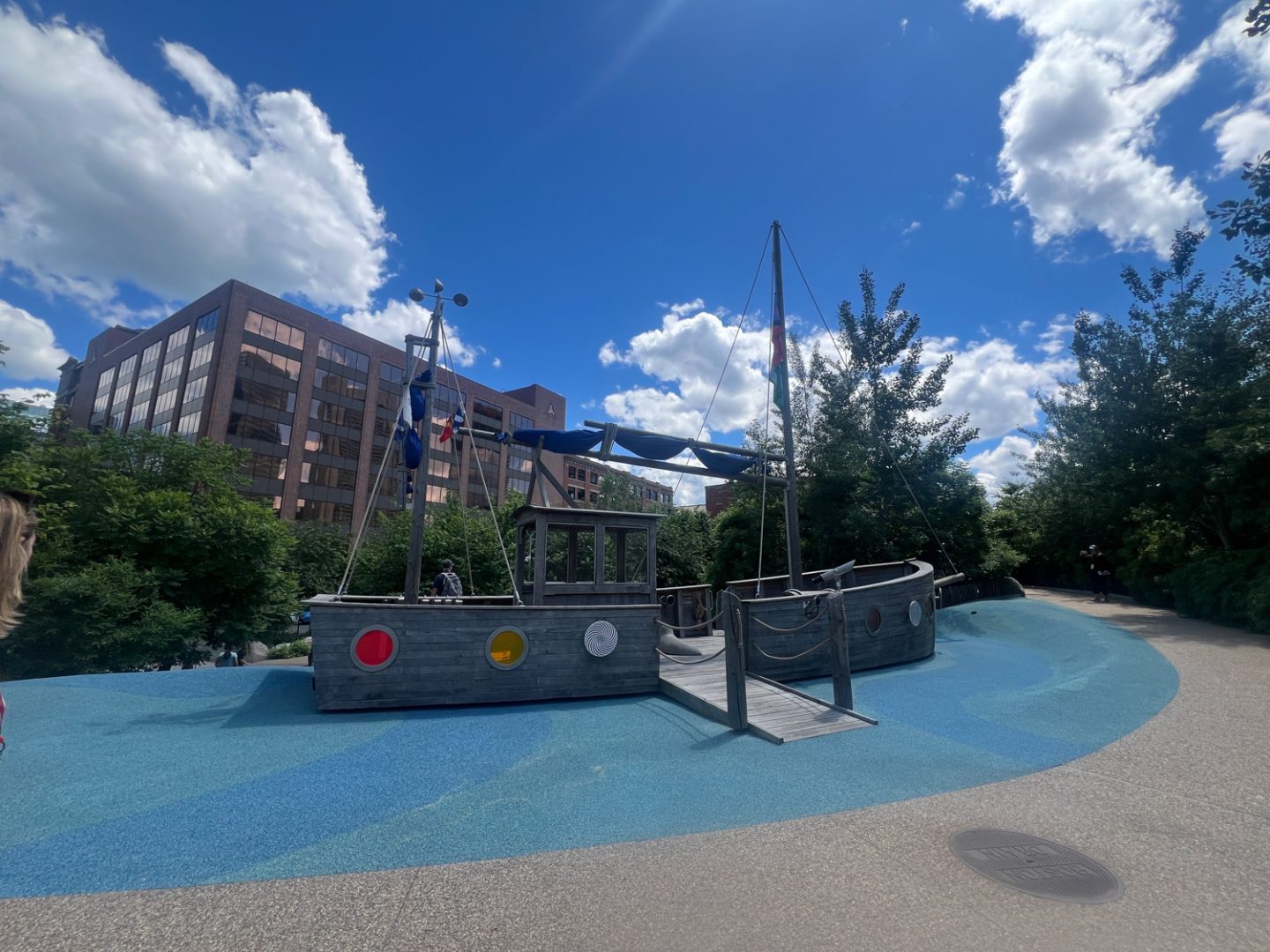
Q: What was your main takeaway from the program?
Andrea Barry: Bringing joy back to downtown! Denver, Seattle, Atlanta, and other major cities NINE dot ARTS is working in face many challenges that seem to grow with the city’s population – like Boston. But also like Boston, these places have incredible leaders in the civic, business, and nonprofit sectors who are eager to make positive change – not to mention a proactive community who continue to demonstrate their care for and pride in the place they call home. This program is exactly the kind of reinvigorating experience our leaders need to remember why we do what we do – and who we do it for.
Martha McGee: There’s been so much talk of the loneliness epidemic and the need for meaningful “third spaces” to counteract it, and Boston was evidence of this. Through strategic investments and policy changes, Boston has produced third spaces that spark joy – spaces where residents want to be and tourists want to visit. Spaces I’m excited to return to! It’s clear that people continue to yearn for connection and joy, and it feels affirming to know that NINE dot ARTS can make a real impact in producing those feelings through authentic arts and cultural experiences that enhance our civic spaces.
